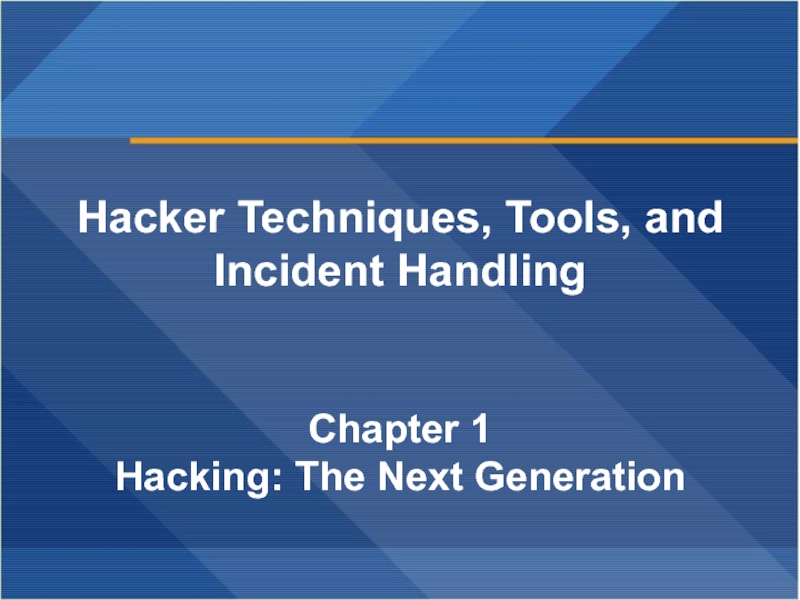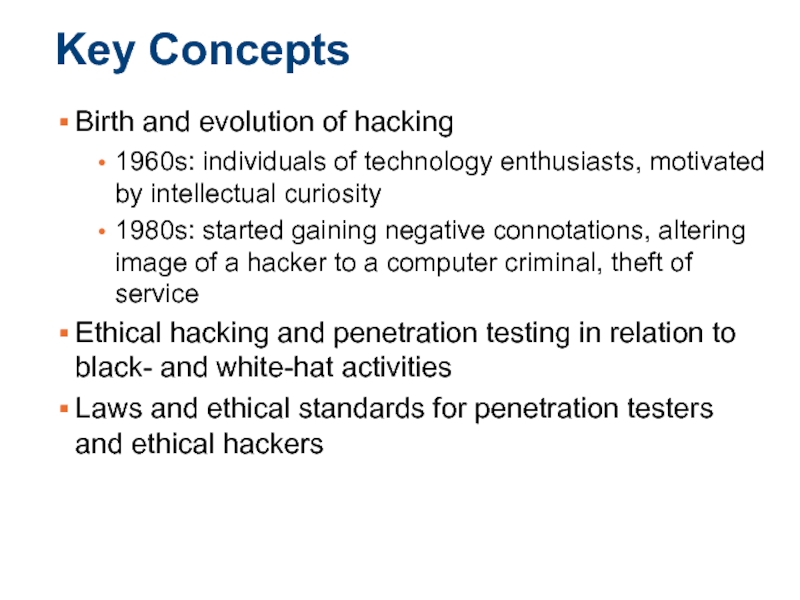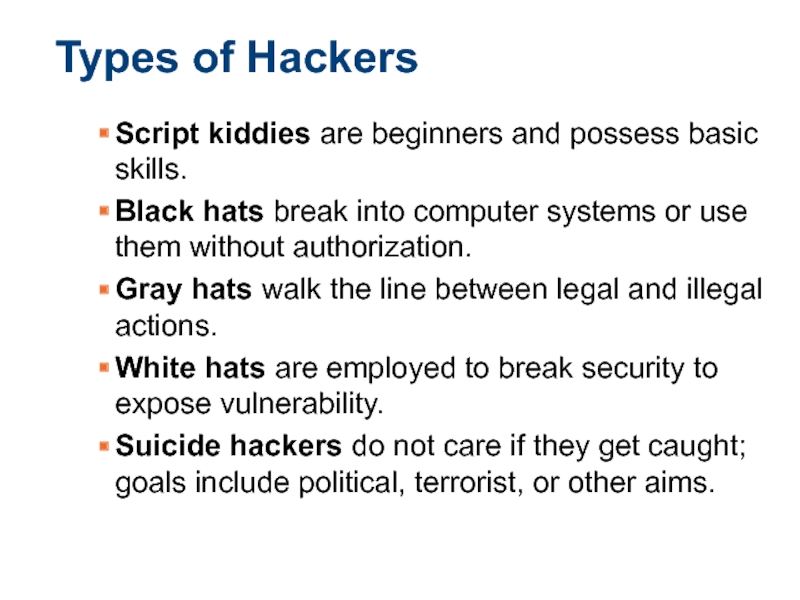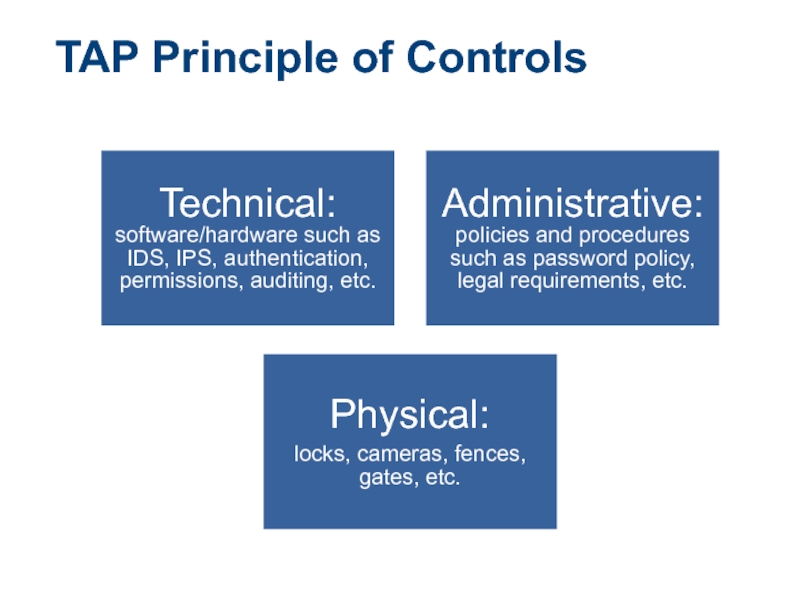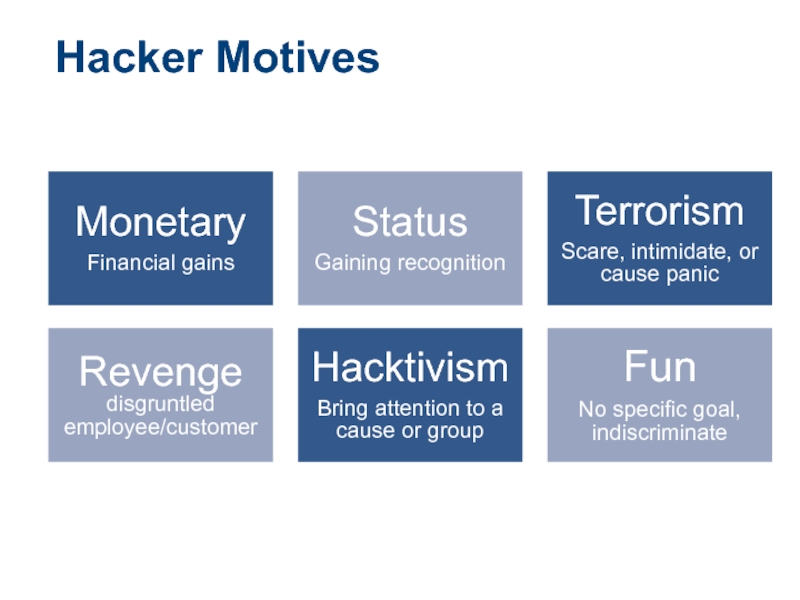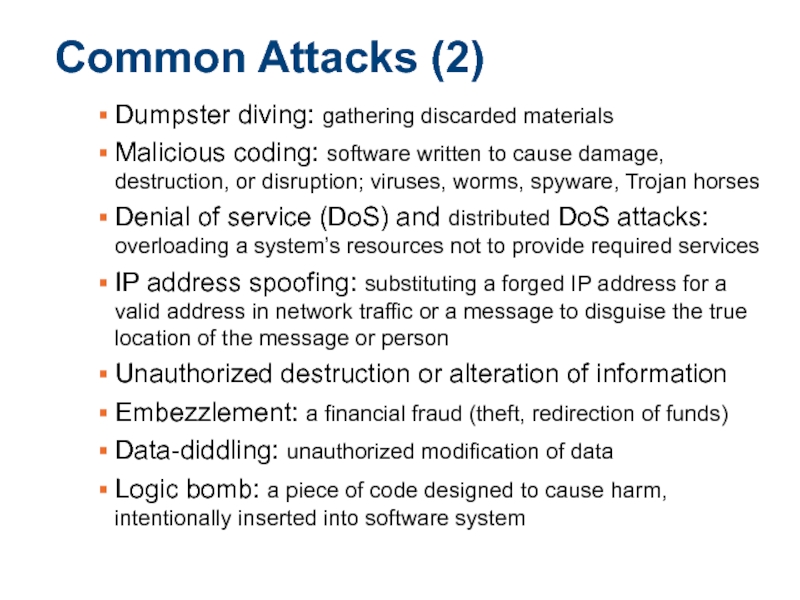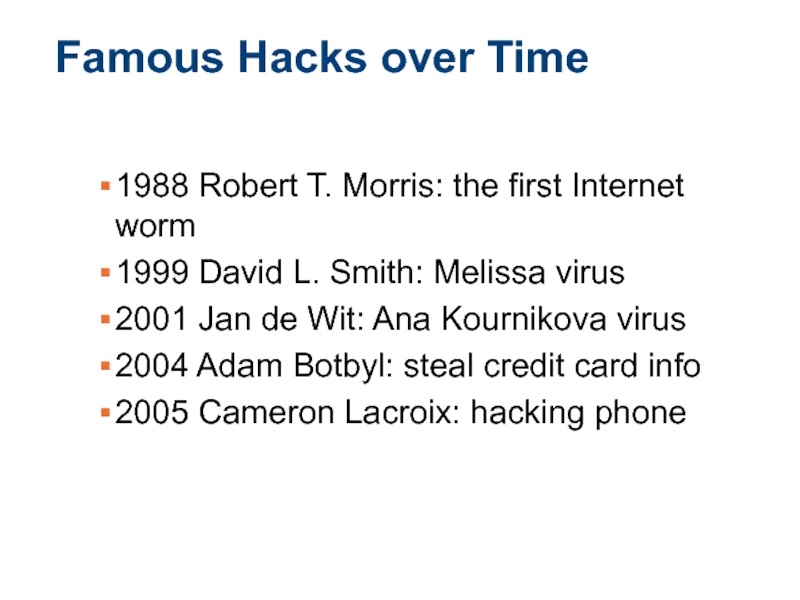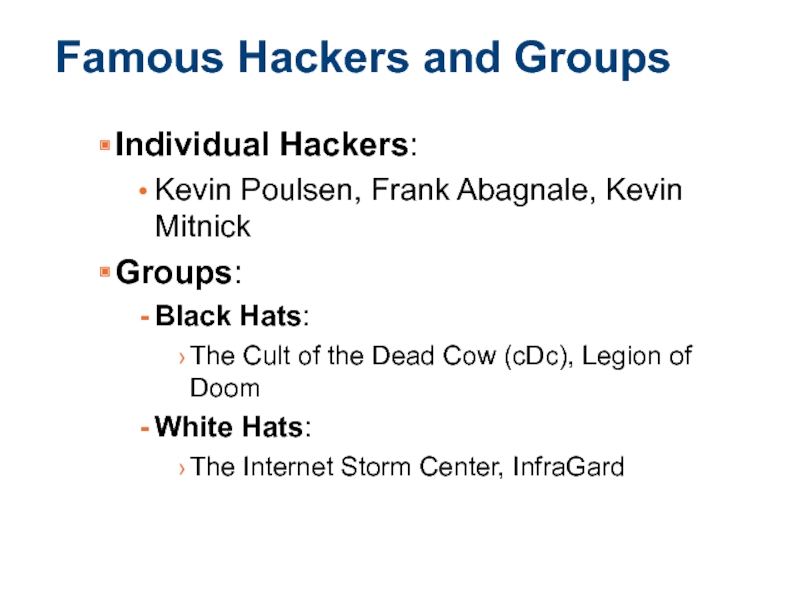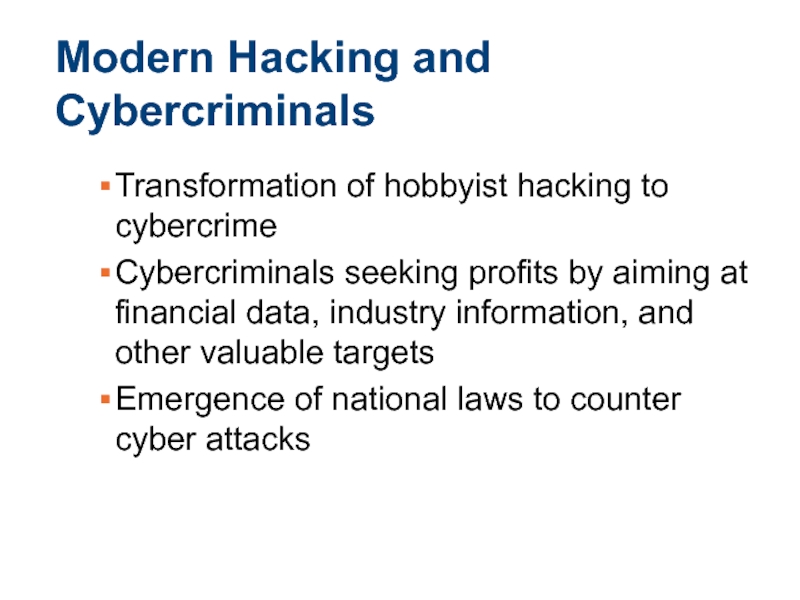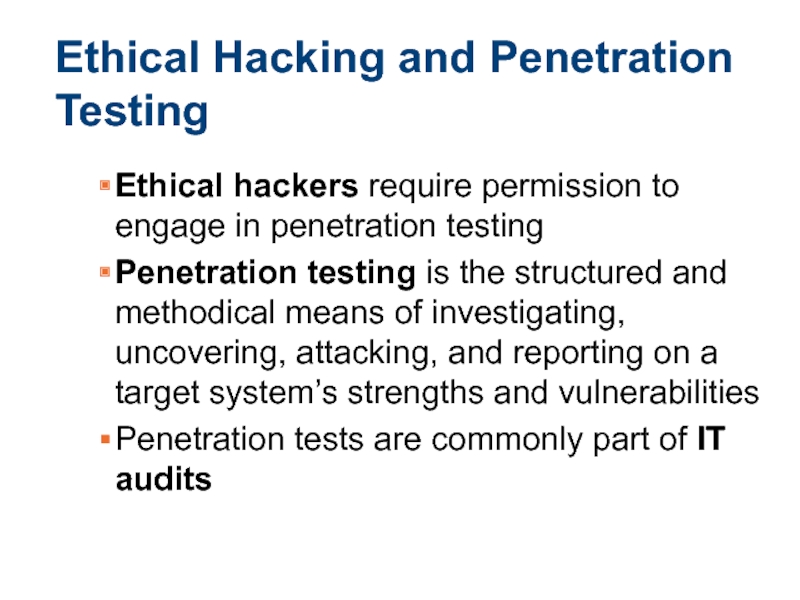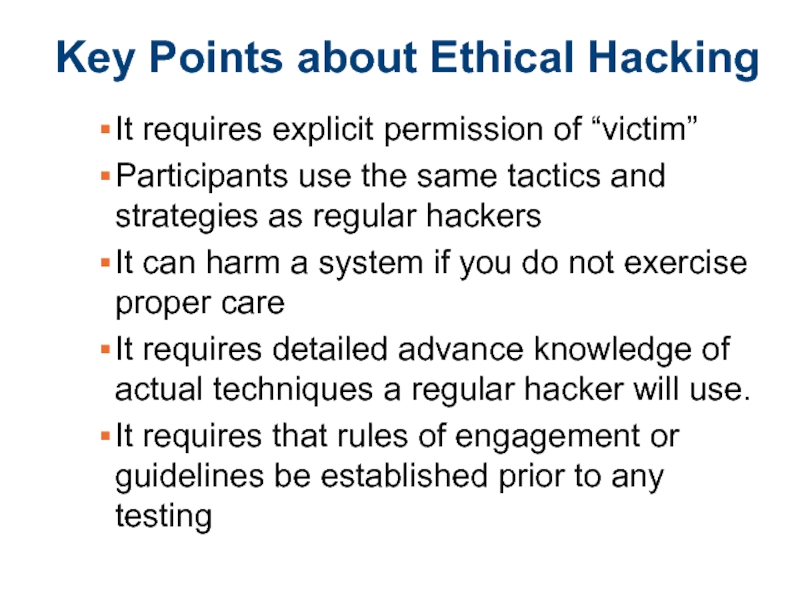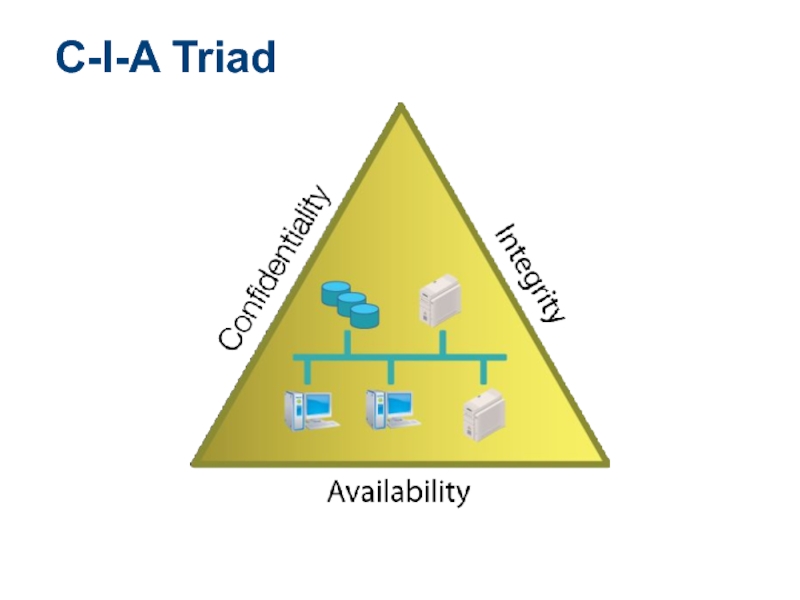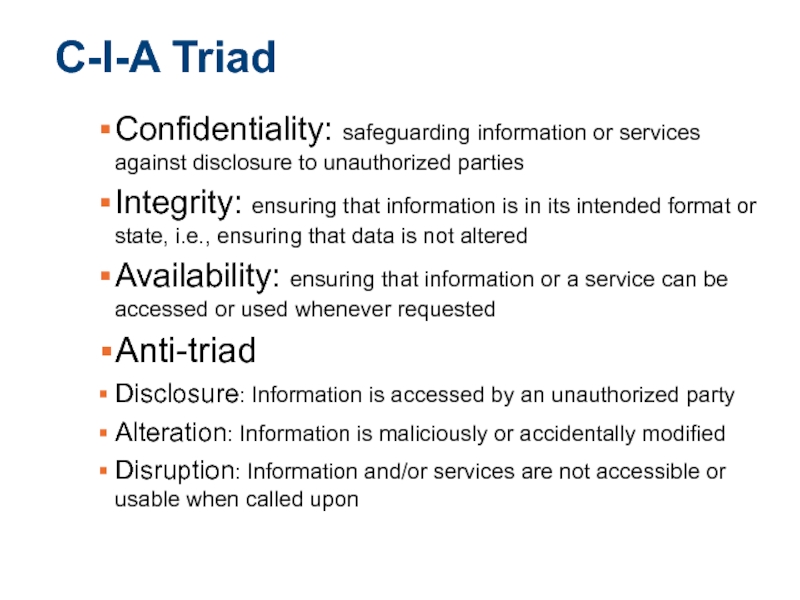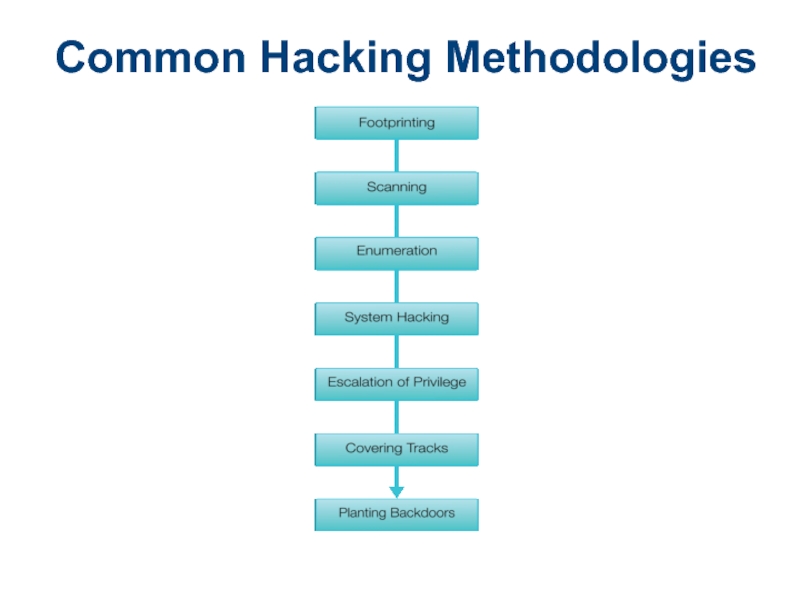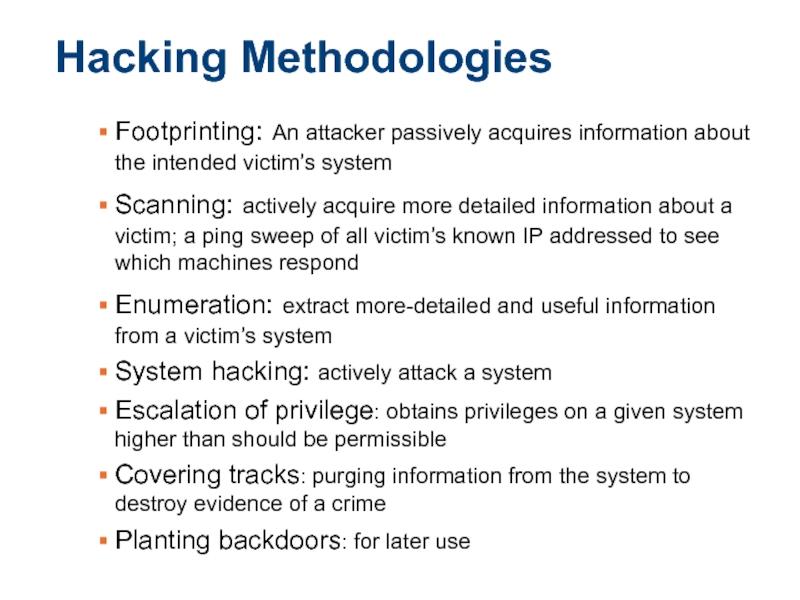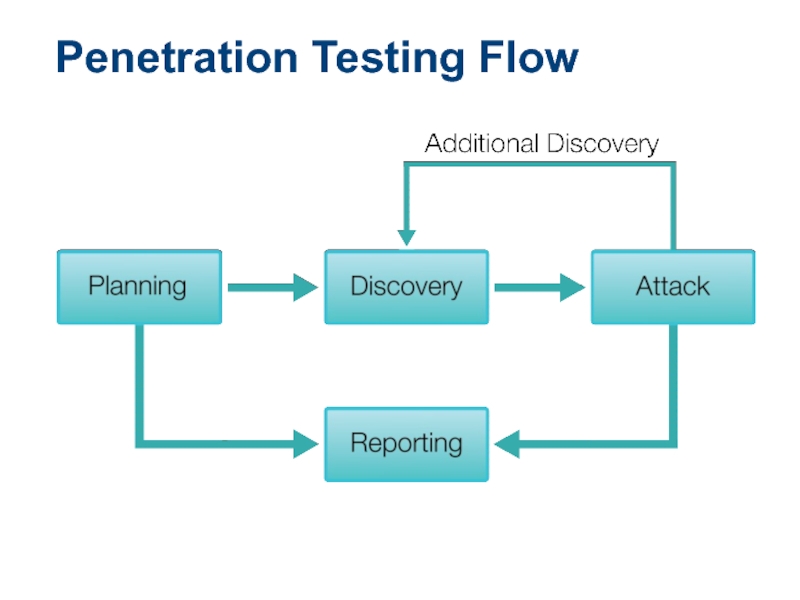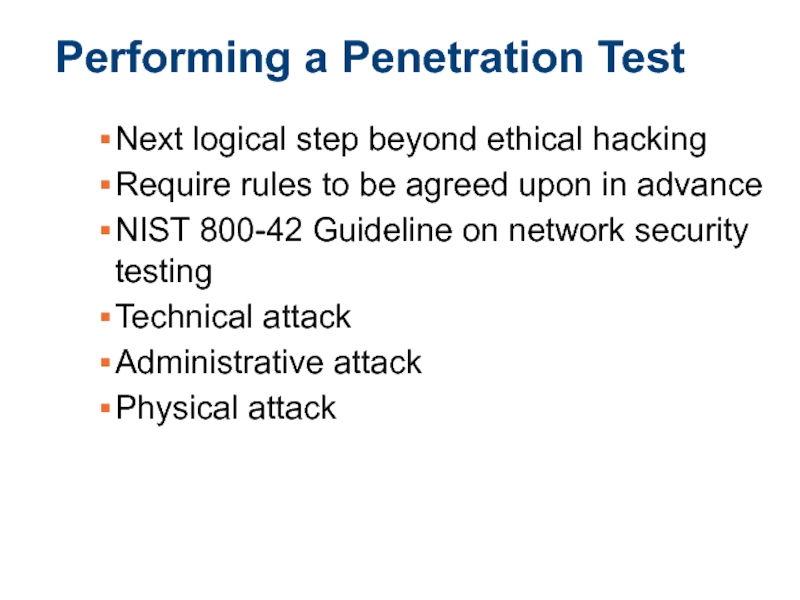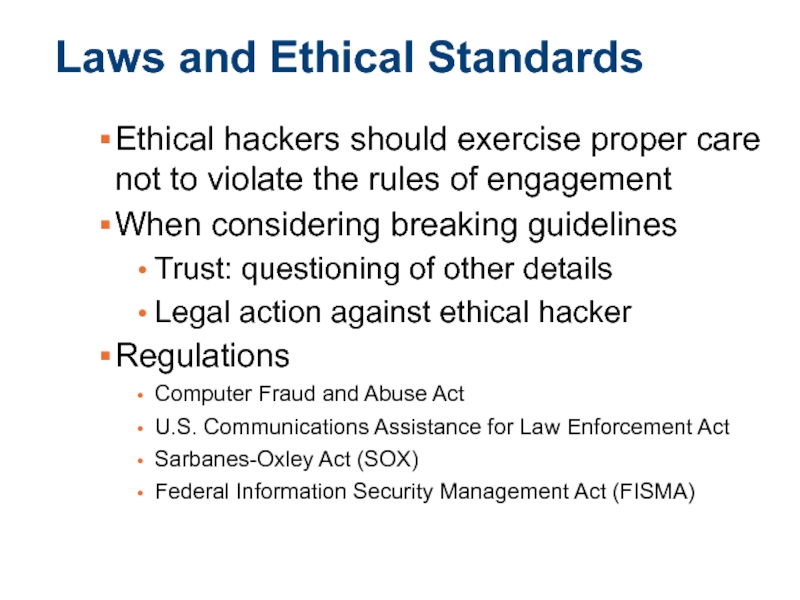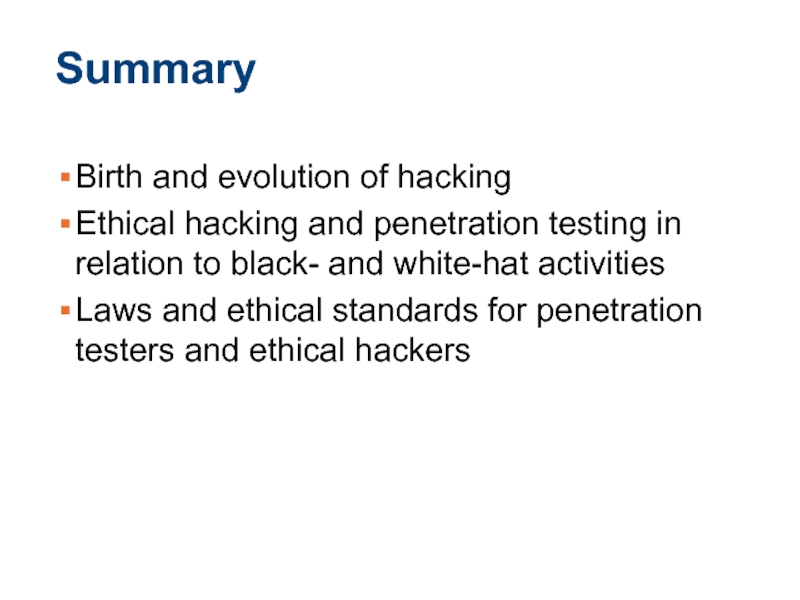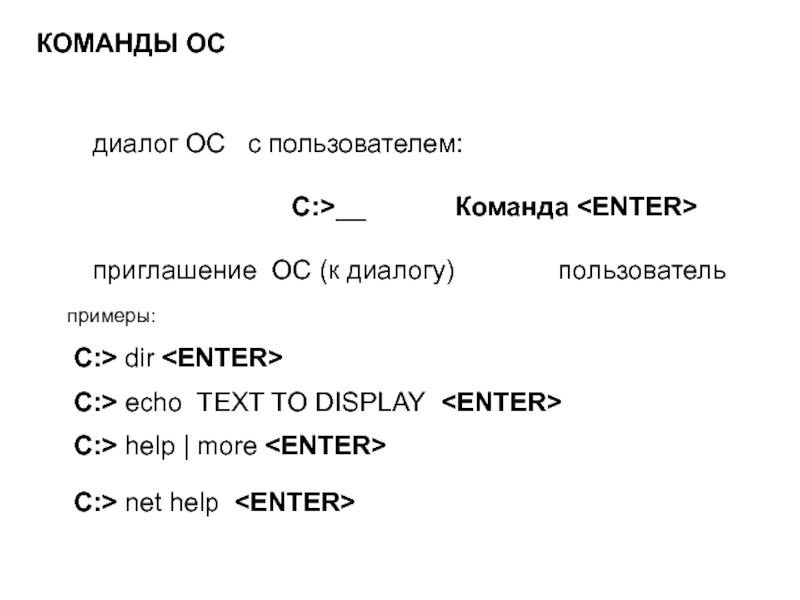- Главная
- Разное
- Дизайн
- Бизнес и предпринимательство
- Аналитика
- Образование
- Развлечения
- Красота и здоровье
- Финансы
- Государство
- Путешествия
- Спорт
- Недвижимость
- Армия
- Графика
- Культурология
- Еда и кулинария
- Лингвистика
- Английский язык
- Астрономия
- Алгебра
- Биология
- География
- Детские презентации
- Информатика
- История
- Литература
- Маркетинг
- Математика
- Медицина
- Менеджмент
- Музыка
- МХК
- Немецкий язык
- ОБЖ
- Обществознание
- Окружающий мир
- Педагогика
- Русский язык
- Технология
- Физика
- Философия
- Химия
- Шаблоны, картинки для презентаций
- Экология
- Экономика
- Юриспруденция
Hacker techniques, tools, and incident handling. (Chapter 1) презентация
Содержание
- 1. Hacker techniques, tools, and incident handling. (Chapter 1)
- 2. Learning Objective Explore the history and current
- 3. Key Concepts Birth and evolution of hacking
- 4. Types of Hackers Script kiddies
- 5. TAP Principle of Controls Technical: software/hardware such
- 6. Hacker Motives Monetary Financial gains
- 7. Common Attacks (1) Theft of access: stealing
- 8. Common Attacks (2) Dumpster diving: gathering discarded
- 9. Hacking as skillful modification of systems Early
- 10. Famous Hacks over Time 1988 Robert T.
- 11. Famous Hackers and Groups Individual Hackers:
- 12. Modern Hacking and Cybercriminals Transformation of hobbyist
- 13. Ethical Hacking and Penetration Testing Ethical hackers
- 14. Key Points about Ethical Hacking It requires
- 15. C-I-A Triad
- 16. C-I-A Triad Confidentiality: safeguarding information or services
- 17. Common Hacking Methodologies
- 18. Hacking Methodologies Footprinting: An attacker passively acquires
- 19. Penetration Testing Flow
- 20. Performing a Penetration Test Next logical step
- 21. Laws and Ethical Standards Ethical hackers should
- 22. Summary Birth and evolution of hacking Ethical
Слайд 2Learning Objective
Explore the history and current state of hacking and penetration
Слайд 3Key Concepts
Birth and evolution of hacking
1960s: individuals of technology enthusiasts, motivated
1980s: started gaining negative connotations, altering image of a hacker to a computer criminal, theft of service
Ethical hacking and penetration testing in relation to black- and white-hat activities
Laws and ethical standards for penetration testers and ethical hackers
Слайд 4Types of Hackers
Script kiddies are beginners and possess basic skills.
Black hats
Gray hats walk the line between legal and illegal actions.
White hats are employed to break security to expose vulnerability.
Suicide hackers do not care if they get caught; goals include political, terrorist, or other aims.
Слайд 5TAP Principle of Controls
Technical: software/hardware such as IDS, IPS, authentication, permissions,
Administrative: policies and procedures such as password policy, legal requirements, etc.
Physical:
locks, cameras, fences, gates, etc.
Слайд 6Hacker Motives
Monetary
Financial gains
Status
Gaining recognition
Terrorism
Scare, intimidate, or cause panic
Revenge
disgruntled employee/customer
Hacktivism
Bring attention to
Fun
No specific goal, indiscriminate
Слайд 7Common Attacks (1)
Theft of access: stealing passwords, subverting access mechanisms to
Network intrusions: accessing a system of computers without authorization
Emanation eavesdropping: intercepting radio frequency signals
Social engineering: telling lies to manipulate people into divulging information they otherwise would not provide
Posting and/or transmitting illegal material
Fraud: intentional deception to produce illegal financial gain or damage another party
Software piracy: violation of a license agreement, removing copy protection
Слайд 8Common Attacks (2)
Dumpster diving: gathering discarded materials
Malicious coding: software written
Denial of service (DoS) and distributed DoS attacks: overloading a system’s resources not to provide required services
IP address spoofing: substituting a forged IP address for a valid address in network traffic or a message to disguise the true location of the message or person
Unauthorized destruction or alteration of information
Embezzlement: a financial fraud (theft, redirection of funds)
Data-diddling: unauthorized modification of data
Logic bomb: a piece of code designed to cause harm, intentionally inserted into software system
Слайд 9Hacking as skillful modification of systems
Early Viruses, Phone Phreaking
First Hacker Groups,
First Hacking Conference, Polymorphic Codes in Viruses
Pre 1970
1970s
1980s
1990s
History of Hacking
Слайд 10Famous Hacks over Time
1988 Robert T. Morris: the first Internet worm
1999
2001 Jan de Wit: Ana Kournikova virus
2004 Adam Botbyl: steal credit card info
2005 Cameron Lacroix: hacking phone
Слайд 11Famous Hackers and Groups
Individual Hackers:
Kevin Poulsen, Frank Abagnale, Kevin Mitnick
Groups:
Black Hats:
The Cult of the Dead Cow (cDc), Legion of Doom
White Hats:
The Internet Storm Center, InfraGard
Слайд 12Modern Hacking and Cybercriminals
Transformation of hobbyist hacking to cybercrime
Cybercriminals seeking
Emergence of national laws to counter cyber attacks
Слайд 13Ethical Hacking and Penetration Testing
Ethical hackers require permission to engage in
Penetration testing is the structured and methodical means of investigating, uncovering, attacking, and reporting on a target system’s strengths and vulnerabilities
Penetration tests are commonly part of IT audits
Слайд 14Key Points about Ethical Hacking
It requires explicit permission of “victim”
Participants use
It can harm a system if you do not exercise proper care
It requires detailed advance knowledge of actual techniques a regular hacker will use.
It requires that rules of engagement or guidelines be established prior to any testing
Слайд 16C-I-A Triad
Confidentiality: safeguarding information or services against disclosure to unauthorized parties
Integrity: ensuring that information is in its intended format or state, i.e., ensuring that data is not altered
Availability: ensuring that information or a service can be accessed or used whenever requested
Anti-triad
Disclosure: Information is accessed by an unauthorized party
Alteration: Information is maliciously or accidentally modified
Disruption: Information and/or services are not accessible or usable when called upon
Слайд 18Hacking Methodologies
Footprinting: An attacker passively acquires information about the intended victim’s
Scanning: actively acquire more detailed information about a victim; a ping sweep of all victim’s known IP addressed to see which machines respond
Enumeration: extract more-detailed and useful information from a victim’s system
System hacking: actively attack a system
Escalation of privilege: obtains privileges on a given system higher than should be permissible
Covering tracks: purging information from the system to destroy evidence of a crime
Planting backdoors: for later use
Слайд 20Performing a Penetration Test
Next logical step beyond ethical hacking
Require rules to
NIST 800-42 Guideline on network security testing
Technical attack
Administrative attack
Physical attack
Слайд 21Laws and Ethical Standards
Ethical hackers should exercise proper care not to
When considering breaking guidelines
Trust: questioning of other details
Legal action against ethical hacker
Regulations
Computer Fraud and Abuse Act
U.S. Communications Assistance for Law Enforcement Act
Sarbanes-Oxley Act (SOX)
Federal Information Security Management Act (FISMA)
Слайд 22Summary
Birth and evolution of hacking
Ethical hacking and penetration testing in relation
Laws and ethical standards for penetration testers and ethical hackers
